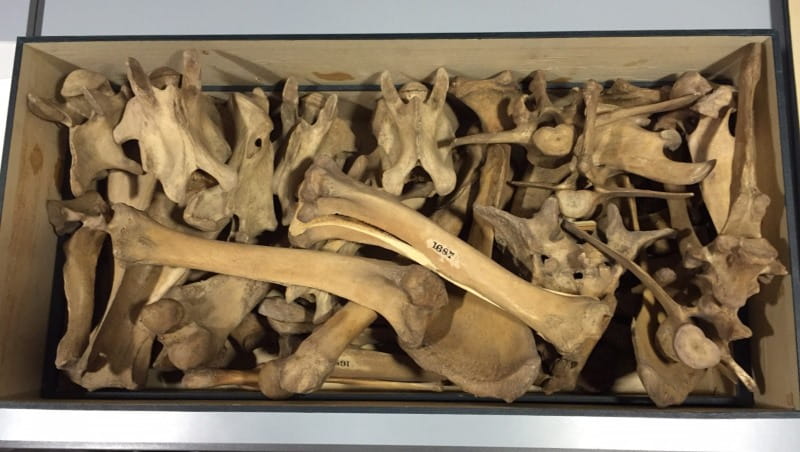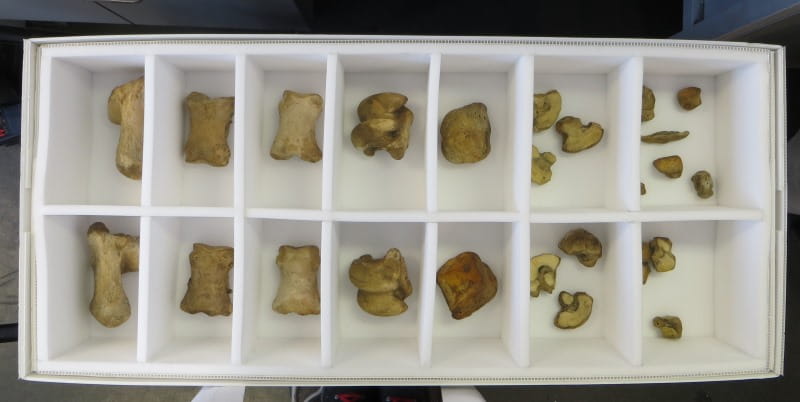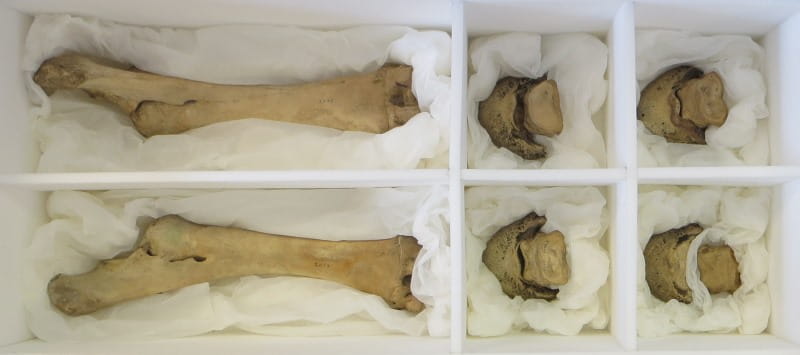Collections on the move: How to move an elephant
31 Mar 2017
Amalia Lemprière
The Hunterian Museum contains approximately 3,500 specimens and preparations from John Hunter’s original collection including the partial skeletons of nine large animals. The bones are over 250 years old and include a Narwhal (the “unicorn of the sea”), an Elephant and two Camels. The collection was used by Hunter to study comparative anatomy, which looks at the similarities and differences in the anatomy of different species.
The bones had not been displayed for many years and hadn’t been stored in an ideal way. Each individual’s bones had been piled into one or two boxes and looked rather like a dismantled jigsaw when the boxes were opened. The storage method used really didn’t reflect the status of these bones as part of John Hunter’s original collection.
As part of the preparation to move the collection off-site, each specimen will now be repacked. A higher standard of packing is required when moving material off site than is usually needed for storage on-site, where items are rarely moved.
Each animal’s bones are measured before a new box is made out of Correx (a special corrugated plastic). More than one box may be used for each skeleton to ensure plenty of space is allowed for the individual bones. The interior of the box is then lined with Plastazote foam which is also used to create compartments to separate the individual bones, cushioning them securely. Plastazote foam has been engineered to be both light and strong making it particularly suitable for this type of work.
Once the bone has been placed in its individual compartment, it is supported underneath and padded around with acid free tissue paper so that it won’t move during transportation. Some of the boxes will have one or two layers of bone within each box. A Correx tray is made to fit inside the box and is supported by the Plastazote compartment walls underneath it.
The number of boxes used for each skeleton varies – one set of Camel bones fitted into a single box while the skeleton of a Horse required seven. The Correx boxes are masterfully built by our Museum Technician, who makes bespoke boxes for each animal, to my specifications. I can usually pack one box per day if there are no complications.
As a Conservator this is an interesting project to be involved in. Moving the collection is an opportunity to ensure that every item is placed into a suitable storage solution which is a vital part in maintaining the Museum’s collections for the future.
We will be posting more stories about our progress in the coming months so look out for the tagline Collections on the move and please get in touch if you have any questions or leave us a comment.
More information on the future of the Lincoln’s Inn Fields buildings can be found here.
Amalia Lemprière, Conservator




